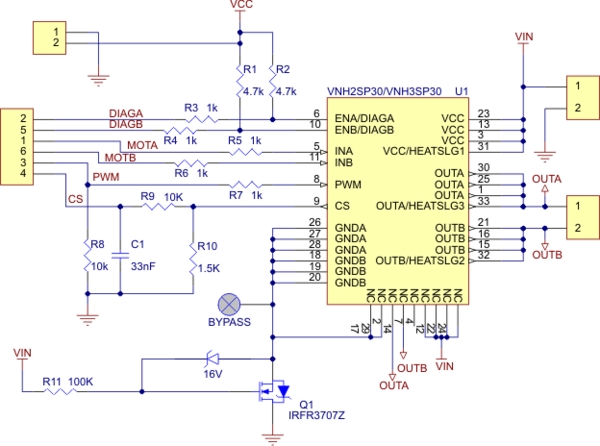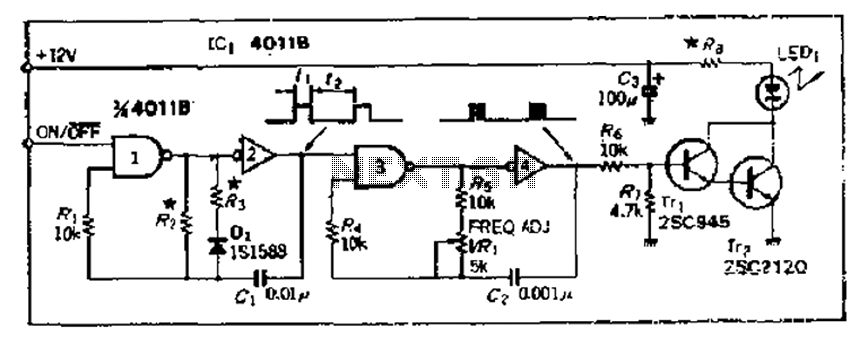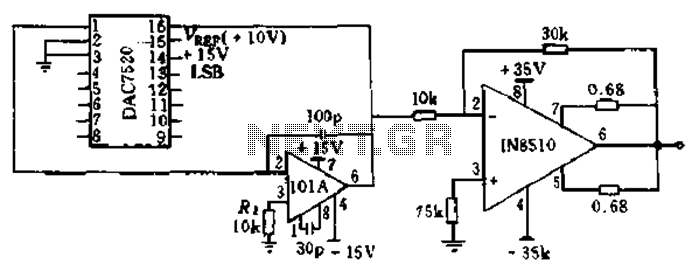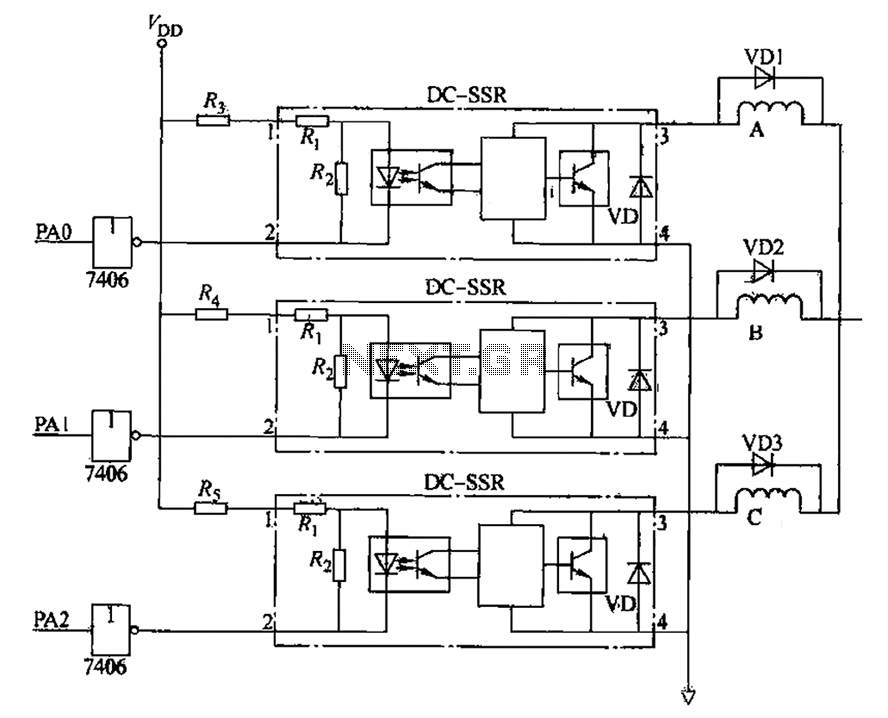
Synchronous motor thyristor excitation circuit
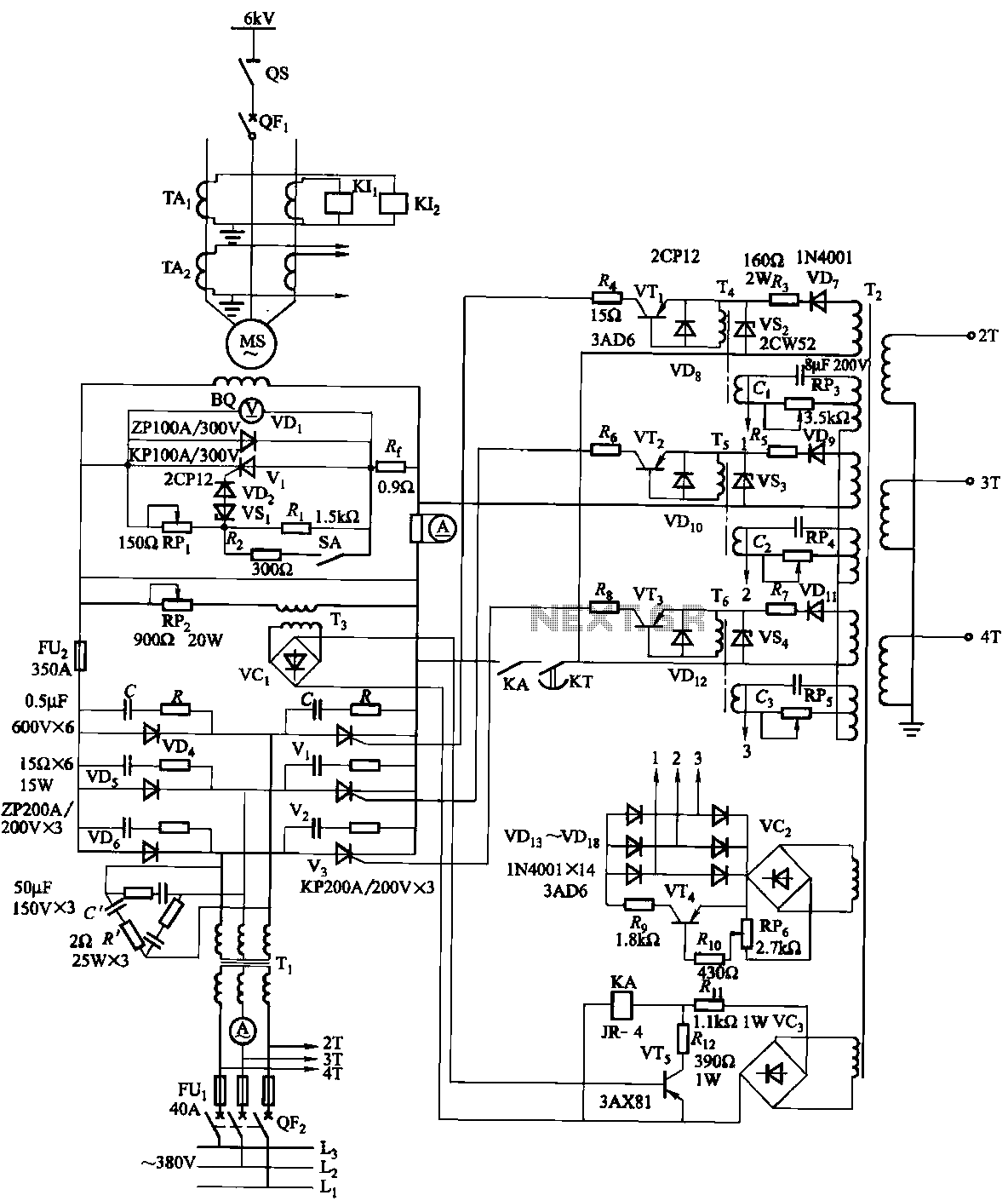
The excitation device for a light-duty synchronous motor rated at 625 kW has been initiated. The triggering circuit of the device consists of three identical RC phase-shift flip-flops. Adjustment potentiometers RP3 to RPs are used to set the RC phase shift bridge phase between 0 and 150 degrees, allowing for control over the rotor excitation current magnitude.
The excitation device is critical for the operation of synchronous motors, which require precise control of rotor excitation to maintain synchronism with the stator's rotating magnetic field. The use of three identical RC phase-shift flip-flops in the triggering circuit provides a robust method for generating the necessary phase shifts. Each flip-flop can be configured to introduce a specific delay, effectively creating a phase shift that can be finely tuned using the adjustment potentiometers.
The adjustment potentiometers RP3 to RPs play a vital role in calibrating the phase shift within the circuit. By varying the resistance in the RC network, the phase angle can be set between 0 and 150 degrees. This flexibility allows for precise control of the excitation current supplied to the rotor, which is essential for optimizing the performance of the synchronous motor under varying load conditions.
The design of the excitation circuit must ensure stability and reliability. The RC phase-shift network must be designed to minimize noise and interference, which can adversely affect the operation of the synchronous motor. Additionally, the choice of components for the flip-flops and the potentiometers should be made with consideration for their thermal characteristics and voltage ratings to ensure long-term operation without failure.
Overall, the described excitation device is a sophisticated control system that allows for enhanced performance and efficiency of light-duty synchronous motors, making it suitable for various industrial applications where precise motor control is required.The excitation device for light duty synchronous motor 625kW initiated. Triggering the device circuit consists of three identical RC phase-shift flip-flops. Adjustment potentiometer RP3 ~ RPs, make RC phase shift bridge phase O. ~ 150. Changes to control the size of the rotor excitation current.
The excitation device is critical for the operation of synchronous motors, which require precise control of rotor excitation to maintain synchronism with the stator's rotating magnetic field. The use of three identical RC phase-shift flip-flops in the triggering circuit provides a robust method for generating the necessary phase shifts. Each flip-flop can be configured to introduce a specific delay, effectively creating a phase shift that can be finely tuned using the adjustment potentiometers.
The adjustment potentiometers RP3 to RPs play a vital role in calibrating the phase shift within the circuit. By varying the resistance in the RC network, the phase angle can be set between 0 and 150 degrees. This flexibility allows for precise control of the excitation current supplied to the rotor, which is essential for optimizing the performance of the synchronous motor under varying load conditions.
The design of the excitation circuit must ensure stability and reliability. The RC phase-shift network must be designed to minimize noise and interference, which can adversely affect the operation of the synchronous motor. Additionally, the choice of components for the flip-flops and the potentiometers should be made with consideration for their thermal characteristics and voltage ratings to ensure long-term operation without failure.
Overall, the described excitation device is a sophisticated control system that allows for enhanced performance and efficiency of light-duty synchronous motors, making it suitable for various industrial applications where precise motor control is required.The excitation device for light duty synchronous motor 625kW initiated. Triggering the device circuit consists of three identical RC phase-shift flip-flops. Adjustment potentiometer RP3 ~ RPs, make RC phase shift bridge phase O. ~ 150. Changes to control the size of the rotor excitation current.
